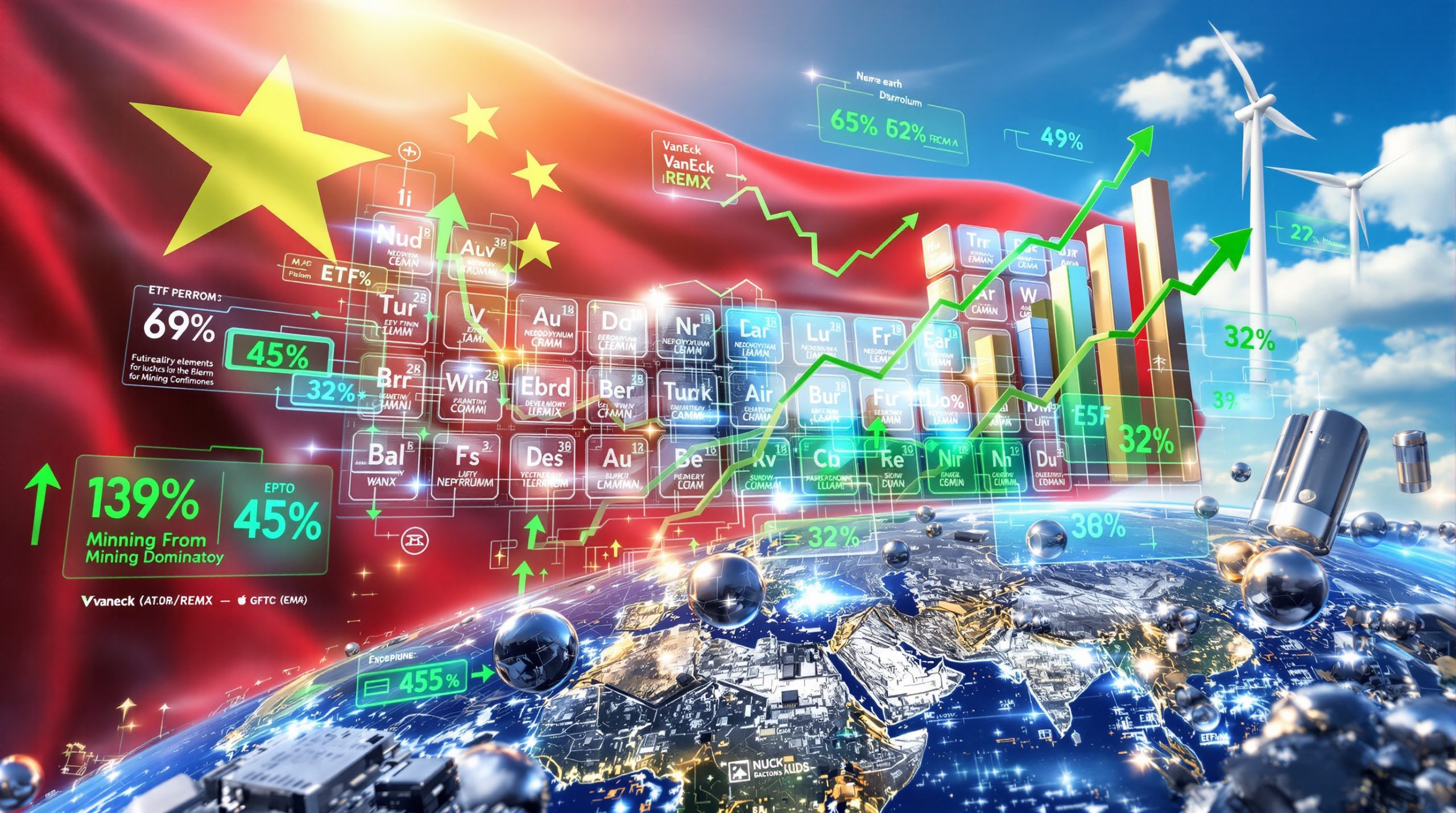Aluminum markets have experienced dramatic upheaval as the aluminum price hits three-year high, reaching $2,920 per tonne on November 3, 2025, marking the highest level since May 2022. This surge represents a continuation of October's remarkable performance, when aluminum gained more than 7% in a single month, its best showing in over a year.
China's Production Constraints Drive Market Surge
China's state-imposed production caps have emerged as the primary catalyst behind this price acceleration. The world's largest aluminum producer has implemented strict output limitations, creating incremental supply tightness as global demand patterns evolve. These restrictions come at a time when manufacturing sectors are positioning for recovery, particularly in construction and consumer goods.
The current price momentum reflects more than temporary market disruption. By 11:27 a.m. local time on November 3, aluminum had risen 1% to $2,912 per tonne, demonstrating sustained buying pressure across multiple trading sessions. This performance has occurred alongside broader metals strength, with zinc, lead, and tin also posting gains.
Key Supply Disruption Factors:
• Strategic production quotas limiting Chinese manufacturing capacity
• Raw material quality concerns affecting refinery operations
• Energy cost pressures impacting smelting economics globally
• Infrastructure bottlenecks constraining distribution networks
Evolving Demand Patterns Across Industrial Applications
The lightweight metal's expanding role in modern manufacturing has created unprecedented demand across multiple sectors. Electric vehicle production continues driving significant aluminum consumption, with manufacturers requiring substantial quantities for battery housings, chassis components, and structural elements designed to maximise range efficiency.
Furthermore, renewable energy infrastructure development has emerged as another major consumption driver. Solar panel frames, wind turbine components, and energy storage systems increasingly rely on aluminum's corrosion resistance and lightweight properties. The ongoing energy transition dynamics position aluminum as a critical material for decarbonisation efforts.
In addition, data center construction for artificial intelligence and cloud computing applications has added unexpected demand pressure. The metal's thermal management properties make it essential for cooling systems and electrical infrastructure supporting these rapidly expanding facilities.
Primary Growth Sectors:
• Electric vehicle manufacturing requiring specialised alloys
• Renewable energy projects demanding corrosion-resistant materials
• Technology infrastructure supporting AI and cloud services
• Construction sector recovery in major global economies
• Aerospace industry expansion following pandemic disruptions
Trade Relations Create Market Optimism
Recent diplomatic developments between the United States and China have significantly influenced investor sentiment surrounding aluminum markets. However, the US-China trade impacts continue creating complex market dynamics despite improving relations.
Under this arrangement, many contentious trade issues will be revisited one year from the agreement date, creating a temporary period of reduced tension. This development has encouraged increased investment planning and consumption forecasting across aluminum-intensive industries.
The trade truce has enabled more predictable supply chain management, with companies now able to develop longer-term procurement strategies without the constant uncertainty of shifting tariff structures. This stability has contributed to improved demand visibility for aluminum producers and consumers alike.
However, market participants remain cautious about underlying economic fundamentals. China's manufacturing sector continues showing weakness, with private surveys falling more than expected in October. The country's official factory gauge has recorded its longest run of declines in more than nine years, tempering optimism about sustained demand recovery.
Commodity Substitution Effects Drive Additional Demand
With copper price insights indicating copper trading around $10,880 per tonne, aluminum has become increasingly attractive for applications where high electrical conductivity is not critical. This substitution trend has created additional demand pressure beyond traditional aluminum applications.
The price differential between aluminum and copper has expanded sufficiently to make substitution economically viable in multiple industrial applications. Electrical infrastructure projects, building construction, and automotive components have all seen increased aluminum adoption where engineering requirements permit.
Consequently, this substitution effect represents a structural shift that could persist even if copper prices moderate, as manufacturers often require significant time and investment to reverse material selection decisions once implemented in production processes.
Technical Analysis Reveals Strong Market Foundation
Current price levels demonstrate robust technical support across multiple timeframes. The breakthrough above previous resistance levels near $2,850 per tonne has opened potential for further upside movement, with many technical analysts identifying limited overhead resistance until significantly higher price levels.
| Market Metric | Current Value | Performance |
|---|---|---|
| Peak Price (Nov 2025) | $2,920/tonne | Highest since May 2022 |
| Trading Level (11:27 AM) | $2,912/tonne | +1.0% daily |
| October Monthly Gain | 7%+ | Best in 12+ months |
| Daily High Movement | +1.3% | Strong intraday momentum |
Volume patterns accompanying this price advance suggest institutional participation rather than speculative activity. The sustained nature of buying pressure across multiple trading sessions indicates fundamental rather than technical factors driving market behaviour.
London Metal Exchange inventory levels remain supportive of continued price strength, with warehouse stocks reflecting tight supply conditions relative to consumption patterns. This physical market backdrop provides foundation for sustained price elevation.
Industrial Sector Cost Implications
Automotive Manufacturing Adjustments
Electric vehicle manufacturers face particular pressure as aluminum costs comprise significant portions of production expenses. The metal's critical role in achieving weight reduction targets makes substitution challenging, forcing companies to absorb cost increases or adjust pricing strategies.
Traditional automotive manufacturers are reassessing component specifications and supply chain strategies to manage aluminum exposure. Some producers are exploring longer-term contracts to provide cost certainty, whilst others are investigating recycled aluminum alternatives to reduce expenses.
Construction Industry Impact
Building contractors and infrastructure developers must navigate increased material costs whilst maintaining project profitability. Aluminum's structural properties and corrosion resistance make it irreplaceable in many applications, limiting substitution options for cost-sensitive projects.
Commercial construction projects are experiencing budget pressures as window frames, curtain wall systems, and roofing materials incorporate significant aluminum content. Project timelines are extending as contractors seek alternative sourcing arrangements or renegotiate pricing with clients.
Packaging Sector Responses
Beverage manufacturers and food packaging companies are implementing various strategies to manage rising aluminum costs. Some producers are exploring alternative materials for specific applications, whilst others are adjusting product sizing or packaging designs to optimise material usage.
The recycling rate for aluminum cans provides some cost mitigation, as recycled content requires significantly less energy to process than primary aluminum. Companies with established recycling programs are experiencing comparative advantages in managing cost pressures.
Supply-Demand Balance Outlook Through 2026
Production Capacity Limitations
Global aluminum production faces multiple constraints expected to persist through 2026. China's state-imposed restrictions represent the most significant supply limitation, affecting global market balance due to the country's dominant production position.
For instance, energy costs continue pressuring smelter operations worldwide, with some facilities operating at reduced capacity or considering temporary shutdowns during peak energy price periods. Environmental regulations in various jurisdictions are also constraining expansion plans for primary aluminum production.
Production Challenge Areas:
• Chinese output restrictions limiting global supply growth
• Energy cost pressures affecting smelter economics
• Environmental compliance constraining capacity expansion
• Raw material availability concerns in key regions
Demand Growth Projections
Industry analysis suggests continued demand strength across multiple sectors through 2026. Electric vehicle production growth remains a primary driver, with manufacturers requiring substantial aluminum content per vehicle to achieve range and efficiency targets.
Renewable energy infrastructure development is accelerating globally, creating sustained demand for aluminum in solar installations, wind projects, and energy storage systems. Government policies supporting clean energy transitions provide long-term demand visibility for aluminum producers, highlighting the connection to decarbonisation benefits.
The artificial intelligence boom has created unexpected demand from data center construction and technology infrastructure projects. These applications often require specialised aluminum alloys with specific thermal and electrical properties, supporting higher-value product segments.
Producer Strategic Responses
Capacity Optimisation Strategies
Major aluminum producers are implementing various approaches to maximise value from existing operations whilst managing constrained supply conditions. Facility upgrades focusing on energy efficiency and productivity improvements have become priorities across the industry.
Investment in speciality alloys and high-value applications is increasing, as producers seek to capture premium pricing for products serving growing markets like electric vehicles and aerospace applications. These strategies provide better margins than commodity aluminum production.
Technology and Efficiency Improvements
Smelter technology upgrades are enabling producers to maintain output whilst reducing energy consumption and environmental impact. Modern production technologies are improving operational efficiency across multiple facilities through advanced process controls and automation systems.
Recycling capacity expansion represents another strategic focus, as recycled aluminum production requires significantly less energy than primary production whilst meeting growing sustainability requirements from major consumers.
Economic Risks and Market Vulnerabilities
Chinese Economic Headwinds
China's manufacturing sector weakness poses significant risks to sustained aluminum demand growth. Recent data showing manufacturing surveys falling more than expected in October highlight ongoing economic challenges in the world's largest aluminum consuming market.
The country's official factory gauge recording its longest decline in more than nine years suggests structural issues beyond temporary economic cycles. This weakness could limit demand recovery even if trade tensions remain subdued.
Economic Risk Indicators:
• Manufacturing sector contraction extending beyond expectations
• Factory activity showing longest decline period in nine years
• Construction demand vulnerable to property sector issues
• Consumer goods consumption remaining below historical trends
Global Economic Sensitivity
However, aluminum demand remains highly sensitive to global economic conditions, with construction and automotive sectors particularly vulnerable to recession risks. Interest rate policies affecting housing and vehicle purchases could significantly impact consumption patterns.
Supply chain disruptions from geopolitical tensions or natural disasters could quickly alter market dynamics, given the concentrated nature of global aluminum production. Alternative supply sources remain limited for major consuming regions.
Investment Implications and Market Outlook
Price Sustainability Factors
Current aluminum price levels reflect fundamental supply-demand imbalances likely to persist into 2026. The combination of Chinese production restrictions and growing industrial demand creates a supportive environment for sustained price elevation when the aluminum price hits three-year high.
Nevertheless, economic risks remain significant, particularly regarding Chinese manufacturing weakness and global recession possibilities. Market participants should monitor key economic indicators for early signals of demand deterioration.
The aluminum market's current dynamics represent more than cyclical price movement – they reflect structural changes in global supply chains and industrial demand that could establish new baseline pricing levels.
Strategic Considerations
For Industrial Consumers:
• Evaluate long-term supply contract opportunities to ensure availability
• Implement inventory strategies balancing cost and supply security
• Assess substitution possibilities where technically feasible
• Develop recycling programs to reduce primary aluminum exposure
For Market Participants:
• Monitor Chinese policy implementation and economic indicators
• Track energy cost trends affecting global smelter operations
• Evaluate exposure to aluminum-intensive growth sectors
• Consider supply chain diversification strategies
Structural Market Transformation
The aluminum market's trajectory reflects fundamental shifts extending beyond traditional commodity cycles. China's production constraints, combined with expanding applications in clean technology and electric mobility, have created a new market structure with different dynamics than previous decades.
The convergence of supply limitations and evolving demand patterns suggests aluminum prices may have established a new baseline rather than experiencing temporary elevation. This transformation positions aluminum as a strategic material in global economic transitions toward sustainability and electrification.
Consequently, market participants must adapt strategies to this new environment, where traditional cyclical patterns may no longer provide reliable guidance for price forecasting and procurement planning. The aluminum market's evolution continues reflecting broader changes in global manufacturing, energy systems, and transportation technologies.
Understanding these structural shifts will be essential for successful navigation of aluminum markets through 2025 and beyond, as traditional commodity trading approaches encounter new fundamental drivers and market dynamics. The current surge demonstrates how the aluminum price hits three-year high levels when supply constraints meet evolving industrial demand patterns.
Looking to Capitalise on Critical Metals Like Aluminum?
Discovery Alert's proprietary Discovery IQ model delivers instant notifications on significant ASX mineral discoveries across all commodities, including base metals like aluminum, turning complex market data into actionable investment insights. Explore how historic discoveries have generated substantial returns and begin your 30-day free trial today to position yourself ahead of the market with real-time alerts powered by advanced AI technology.




